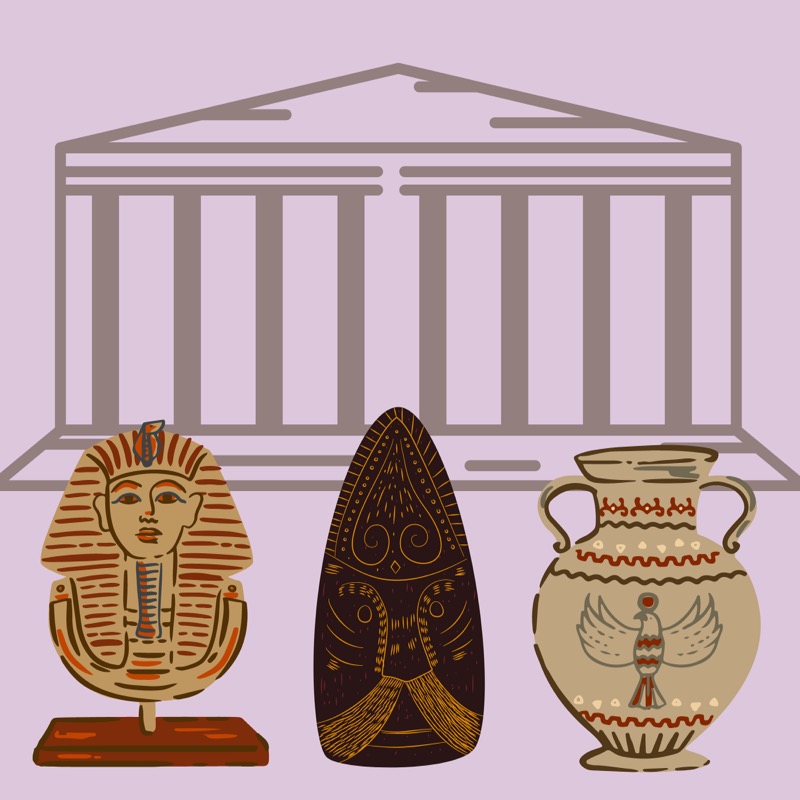
Avery Parkinson explains the western response to requests for repatriation of African artifacts stolen during colonization.
By Avery Parkinson Credit: The Myriad News
At the beginning of the movie Black Panther, Michael B. Jordan’s character Erik Killmonger enters a British museum and engages a white curator regarding the African artifacts displayed in the exhibit. He asks the curator, “How do you think your ancestors got these? You think they paid a fair price? Or did they take it—like they took everything else?”
Indeed, this is a question which has been asked by many others in recent years. Particularly, in the wake of George Floyd’s death, many conversations have been started around renaming and toppling monuments to former slave traders, white supremacists and historical figures who promoted racist behavior. Alongside this is the reexamination of “repatriating art” – the practice of returning an art piece to its place of origin.
Western institutions display looted artifacts
Many western museums feature displays or exhibits that overwhelmingly contain artifacts and pieces of art that were stolen on military raids, by missionaries or civil servants from African tribes during colonial times.
According to figures cited in the 2007 UNESCO Forum, an estimated 90-95 percent of artifacts originating in subsaharan Africa are now located outside Africa. The British Museum is in possession of 73,000 such artifacts, while Germany’s Humbolt Forum and Belgium’s Royal Museum for Central Africa have 75,000 and 120,000 pieces, respectively.
France which has 90,000 sub-saharan African pieces, has announced plans to repatriate art taken from Africa during the colonial period. In 2017, President Emmanuel Macron promised to make this a priority, and the following year, commissioned a report to discern how this should be done.
The report, authored by French art historian Bénédicte Savoy and Senegalese writer Felwine Sarr, recommended a three stage approach which included the immediate return of largely symbolic artifacts, collaboration across institutions to take inventory of other pieces and encouraging other western countries to do the same. Since then, only one 19th century saber from modern-day Mali has been returned.
Activists attempt to remove stolen artifacts
Inspired by this inaction, in early June, a group of five demonstrators attempted to remove a 19th century Bari funeral pole from the Quai Branly-Jaques Chirac museum in Paris. Congo-born artist Mwazulu Diyabanza led the demonstrators on behalf of Les Marrons Unis Dignes et Courageux which, according to the Art Newspaper, describes itself as a “pan-African organization [that] fights for the freedom and transformation of Africa”.
The protestors filmed a 30 minute video of the demonstration in which they described the reasoning behind their action. Diyabanza argues western institutions continue to profit off stolen wealth, including looted artifacts. He says that “It’s wealth that belongs to us, and deserves to be brought back…I will bring to Africa what was taken”.
The protestors were stopped by museum authorities before exiting the building and were arrested and jailed. They were eventually released, and are now awaiting trial in September. If found guilty, they may face up to seven years in prison and a 112,000 U.S. dollar fine.
Western institutions offer to “lend” the artifacts
As a response to calls for repatriation, many institutions have suggested temporarily or permanently “lending” artifacts to their African counterparts. For instance, following Ethiopia’s request for the restitution of artifacts predominantly stolen during war time in the 1860s, the London Victoria and Albert Museum offered to loan the items to Ethiopia for the long term.
In 2006, the Quai Benly Museum in France, temporarily lent a series of wooden statues and carvings to Benin, where they were taken from on a military raid in 1892. The founder of the Beninese Fondation Zinsou where they were displayed, Marie-Cecile Zinzou, commented on receiving an overwhelming amount of feedback asking why the artifacts couldn’t remain there permanently.
Senagalese author Felwine Sarr says “the problem is you can’t lend people an object that fundamentally belongs to them”. Senagalese culture minister Abdou Latif Coulibaly agrees, “It’s entirely logical that Africans should get back their artworks. … These works were taken in conditions that were perhaps legitimate at the time, but illegitimate today.”
Repatriation is not a new struggle
The dispute between western institutions and former colonies regarding who has the rights to historical artifacts is not new. For instance, Greece has demanded the return of the Eglin Marbles from the British Museum, which also houses India’s Koh-i-Noor Diamond.
On the other hand, some countries have successfully began the repatriation process. The Rijksmuseum in the Netherlands have initiated open dialogue with a number of previous colonies on the restitution of stolen artifacts, for instance with Sri Lanka, regarding a bronze cannon that was seized by Dutch troops in 1765.
Germany, which had previously completed a restitution program for Holocaust victims, has agreed on guidelines for African artifact repatriation and dedicated more than $2 million into investigating such objects currently in their possession.
New facilities for repatriated artifacts are built
In response to these measures, several African countries initiated the development of new facilities which could potentially house repatriated artifacts. For example, a private museum created in Lagos, Nigeria features more than one thousand artifacts donated by one of Africa’s most significant art collectors, Yemisi Shayllon.
Senegal’s Museum of Black Civilisations was founded to address the “cultural devaluation” of Black achievements. Similar institutions include Togo’s the Palais de Lomé, Congo’s National Museum and Nigeria’s Benin Royal Museum.
